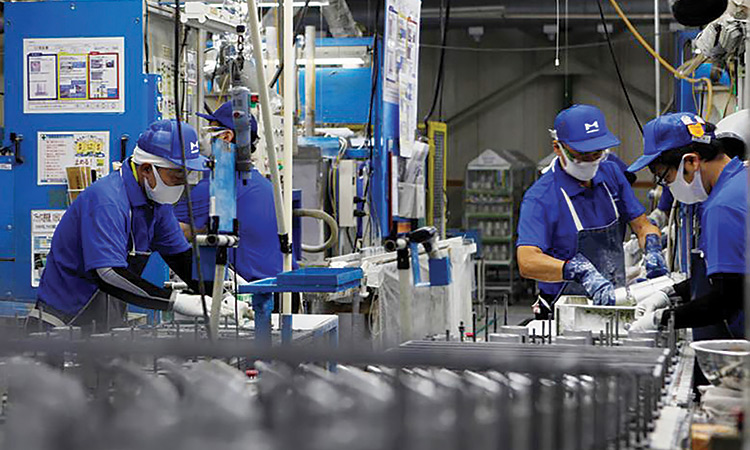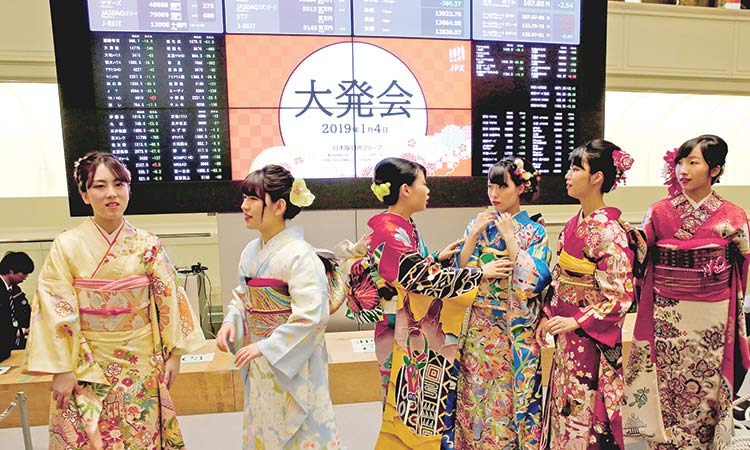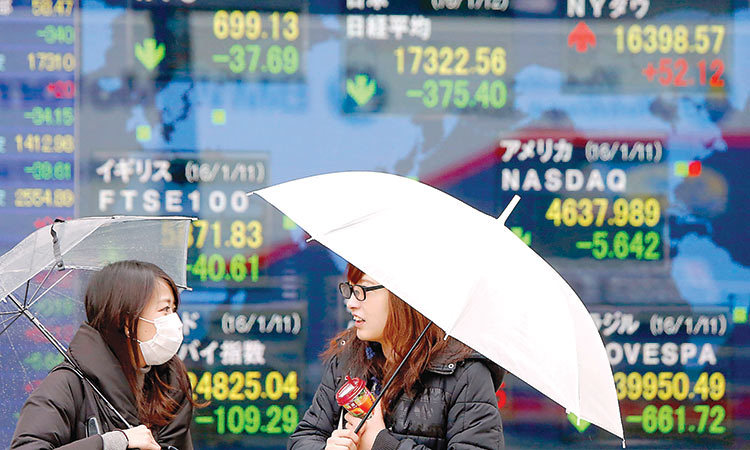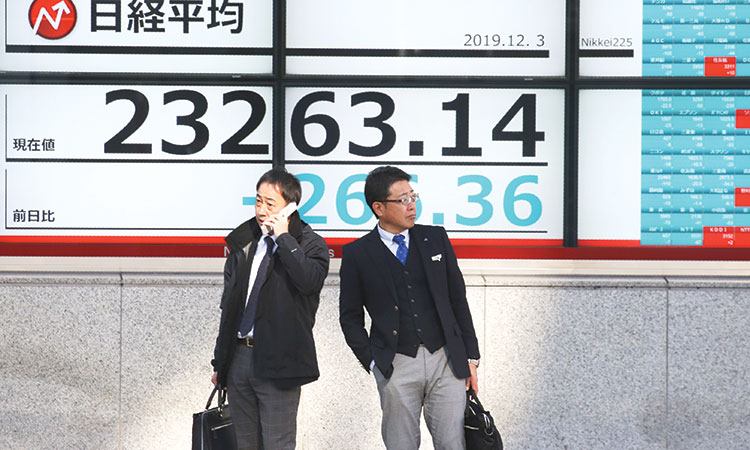Japan November factory output falls on waning global demand

Workers are seen along the assembly line at Marelli’s factory in Ora Town, Gunma Prefecture, Japan. Reuters
The weak production bodes ill for Japanese firms as they face growing calls to raise workers’ pay to counter inflation, seen as essential for the post-pandemic growth of the world’s third-largest economy.
“The impacts of overseas rate hikes, slower growth and weak capital expenditure demand are gradually reaching Japan,” said Masato Koike, economist at Sompo Institute Plus.
“Production inevitably remains weak for October-December and highly likely stalls furthermore as the global economy hasn’t hit its worst.”
Factory output fell 0.1 per cent in November from the previous month, government data showed on Wednesday, a smaller decline than the median market forecast for a 0.3 per cent drop.
That marked the third monthly decrease in Japanese production and followed a revised 3.2 per cent fall in October and 1.7 per cent contraction in September.
Output of general machinery slipped 7.9 per cent, while that of production machinery decreased 5.7 per cent, driving down the overall index in November. Output of auto products was also down 0.8 per cent.
A Ministry of Economy, Trade and Industry (METI) official told a media briefing that machines to make semiconductors or flat-panel displays saw lower demand across overseas markets such as China, Europe and North America. METI cut its assessment of industrial output for a second straight month, saying “production is weakening”.
Manufacturers surveyed by METI expect output to gain 2.8 per cent in December and decrease 0.6 per cent in January, but production could continue falling, the official added, saying companies tend to downgrade their production plans afterwards in recent months.
Following a surprise contraction in July-September, economists expect Japan to grow an annualised 3.3 per cent in October December on robust domestic demand, the latest Reuters poll showed.
But inflation at a four-decade high is testing the resilience of consumer spending. Japanese retail sales fell month-on-month for the first time in five months in November, official data showed on Tuesday.
Businesses are not sanguine either. Last week, the government warned of supply chain risks from China’s COVID-19 surge, while the Bank of Japan (BOJ)’s surprise tweak to its yield control policy stoked uncertainties for some lenders.
Japanese companies head into annual labour talks for 2023 early next year. Substantial wage hikes are seen as necessary for the BOJ’s exit from ultra-loose easing.
The wage hikes next year could end up “neither too high or too low”, Sompo’s Koike said, as strengthening prospects for pay raises are offset by a darker global economic outlook.
“Japan’s real wages are unlikely to show extraordinary growth, which could prevent the BOJ taking drastic measures to exit monetary easing.”
Meanwhile the Bank of Japan (BOJ) policymakers saw the need to keep ultra-low interest rates but discussed growing prospects that higher wages could finally eradicate the risk of a return to deflation, a summary of opinions at their December meeting showed.
Their increasing attention to mounting inflationary pressures could keep alive market expectations the BOJ will phase out dovish Governor Haruhiko Kuroda’s massive stimulus when he steps down in April next year.
“Price rises are accelerating not just for goods but for services... There’s a chance Japan’s inflationary momentum is heightening,” one member was quoted as saying in the summary, released on Wednesday.
At the Dec. 19-20 meeting, the BOJ kept its ultra-easy policy but shocked markets with a surprise tweak to its bond yield control that allows long-term interest rates to rise more.
Several in the nine-member board said the decision was aimed at making the current stimulus programme more sustainable by addressing its side-effects, rather than a step toward ending ultra-loose monetary policy, the summary showed.
But discussions at the board delved into signs of change in Japan’s price outlook that could lay the groundwork for a withdrawal of stimulus when Kuroda departs next year.
While some in the board said Japan has yet to sustainably hit the central bank’s 2 per cent inflation target, others saw signs of change in companies’ prolonged aversion to raising wages and prices.
“Consumer prices are approaching a state seen before Japan’s deflationary period,” one member said, pointing to the growing ratio of items seeing prices rise. “This could be a sign of progress toward achieving a situation where Japan won’t return to deflation,” the member said.







